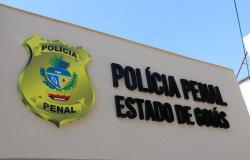Brazil has at least 28 million hectares (ha) of degraded pasture areas with potential for conversion to agriculture, reforestation, increased livestock production or even energy production. The volume of hectares is equivalent to the size of the state of Rio Grande do Sul.
The cerrado is the biome with the largest number of areas undergoing degradation. The states with the largest areas are Mato Grosso (5.1 million ha), Goiás (4.7 million ha), Mato Grosso do Sul (4.3 million ha), Minas Gerais (4.0 million ha), ha) and Pará (2.1 million ha).
To get an idea of the reuse possibilities, if all these areas were used to grow grains (rice, beans, corn, wheat, soybeans and cotton) there would be a 35% increase in the total area planted in Brazil (compared to the harvest 2002/2023).
The extent of the problem and the different possibilities for economic reuse of these areas led the federal government to create at the end of last year the National Program for the Conversion of Degraded Pastures into Sustainable Agricultural and Forestry Production Systems (Decree nº 11,815/2023).
To implement the program, the Brazilian Agricultural Research Corporation, Embrapa, published in a book more than 30 public policy suggestions, which the country has experience and technology developed for implementation.
Planning
Despite the accumulated expertise, implementation is a challenge. Each area to be recovered requires local study. Action planning “must take into account information about the biophysical environment, infrastructure, the environment and socioeconomic issues. Furthermore, it is necessary to evaluate the history of livestock evolution in the location and understand which factors condition the adoption of current systems”, describes the book published by the state-owned company.
Based on planning, it is necessary to create conditions for the reuse of areas: credit, training of producers and assistance. “It is necessary to integrate public policies, ensure that rural producers have access to credit, expand the education service in the countryside, and provide technical assistance and rural extension for structuring projects and so that there is continuous work and not a one-off thing” , points out agronomist Eduardo Matos, superintendent of Strategy at Embrapa.
This Friday (26), the company celebrates 51 years of operation. The commemoration ceremony, this Thursday (25), was attended by President Luiz Inácio Lula da Silva. A copy of the book was delivered to the presidential delegation.
In total, pasture areas occupy 160 million hectares, with approximately 50 million hectares made up of natural pasture and the remainder planted pasture. The grain production area totals 78.5 million hectares, and forests planted for economic use occupy an area of approximately 10 million hectares.
According to IBGE, agricultural activity employs more than 15 million people in Brazil. A third of these jobs are in cattle farming (4.7 million). The country is the second largest beef producer in the world and the largest exporter (11 million tons).





